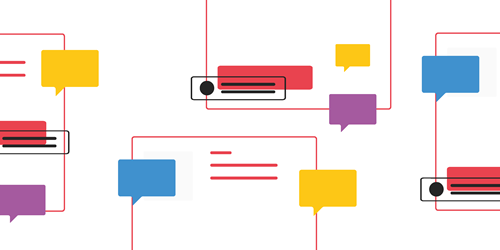Service design is now widely applied in the public and private sectors as an approach to support the delivery of innovative products and services. However, most examples of service design in action focus on product or service development for external users. So, what value does service design provide digital transformation? Is it relevant when end-users are internal users?
We want to share our experience of how service design strengthens the successful implementation and adoption of digital technology within a large organisation. We hope our insights can help industry leaders to understand its value to digital transformation and other internal change initiatives.
What is service design?
Service design, along with other popular design disciplines, such as User Experience (UX) design, is built on the foundations of design thinking. Developing an understanding of the needs and desires of people is at the heart of design thinking. Exploration in the pursuit of a solution and taking an iterative approach to creation are other core characteristics.
But there are differences between UX and service design. UX design strives to investigate the end-end experience of a specific user and the interactions they have before, during, and after they use a product or service. Service design actively looks beyond the user to examine the broader picture, encompassing the business requirements, the experience of the service providers and the back-stage processes and systems that deliver a product and service.
Service design and digital transformation
Digital transformation is the process of integrating digital technologies to create new or modify existing ways of working to meet an ever-changing business and market landscape.
Depending on the size of the organisation and the scale of change required, this process can take the form of long-term programmes made up of multiple software development teams that support the discovery of business requirements and the development and implementation of digital technology. These teams consist of technical and non-technical roles, and service designers placed within these teams is becoming more commonplace.
There are challenges in integrating service design with software development teams. Traditionally, these teams contain experts with technical knowledge and capabilities and are focused on delivering solutions in time-bound delivery phases. In comparison, service design is an integrative discipline that encompasses a broader set of business and user considerations and aims to enable long-term value.
4 ways service design enhances digital transformation
With every challenge lies growth opportunities. Despite the differences between service design and technical delivery, service design can enhance digital transformation. Here are four insights from our experience of how it achieves this:
1. It's not digital transformation - it’s human-led transformation
One of the elements of digital transformation that is often de-prioritised is the human element. Organisations employ digital consultancies for their technical capability and invest less in technology adoption across the workforce. Whatever the size of the organisation, there will often be a broad range of users, some of which will be technology savvy and ready for change, while others will be resistant. In the discovery phase of digital transformation, a human-first approach should take precedent. By building an understanding of people’s needs, challenges, and concerns, and only proposing technology after we have understood these circumstances, end-users will be more open to technology, as it makes sense in the context of their work. They become activators of change, support adoption and help champion technology further
2. Bringing everyone together on the journey
Large-scale digital transformation programmes encompass a myriad of ongoing projects across multiple teams and business units. The complexity and diversity of this activity can lead to tunnel vision and siloed working within teams and across the organisation. From an end-user point of view, the scale of change can contribute to feelings of uncertainty and disconnection, as they do not understand the current state of change and what it means to them.
Service design brings all stakeholders and functions together and actively involves them in the service design process. This holistic engagement strengthens relationships inside and outside of the delivery team. It helps identify opportunities for knowledge exchange across projects and provides a common ground where the top to the bottom of an organisation can interact and share ideas and experiences.
3. The art of the possible
When employees have been working in the same job for a significant period, it can be difficult to understand potential change and how technology is relevant to their working context.
Service design uses the insight generated from research and paints a picture of how technology can support users. This is achieved through variations in language and visualisations for different audiences to help them make sense of a future that excites and is relevant to them.
Painting a future picture does not only help the end-users - it supports others across the organisation in understanding the current and future experience of other roles.
4. It’s never finished
One of the major cultural shifts needed within large organisations in their digital transformation journey is a shift to more iterative work. Large organisations are built on rote working practices. The transition to digital requires the need to become more flexible and the development of a culture that encourages incremental changes, testing, failing, and learning.
Service design, like all design disciplines, is iterative by nature. From initial research - where business and user needs constantly evolve and are reframed, to the final implementation of technology - when pilots enable testing and learning before a wider roll-out. Actively involving all business stakeholders in the service design process reinforces the value of iteration and discovery.
Back to all insights

